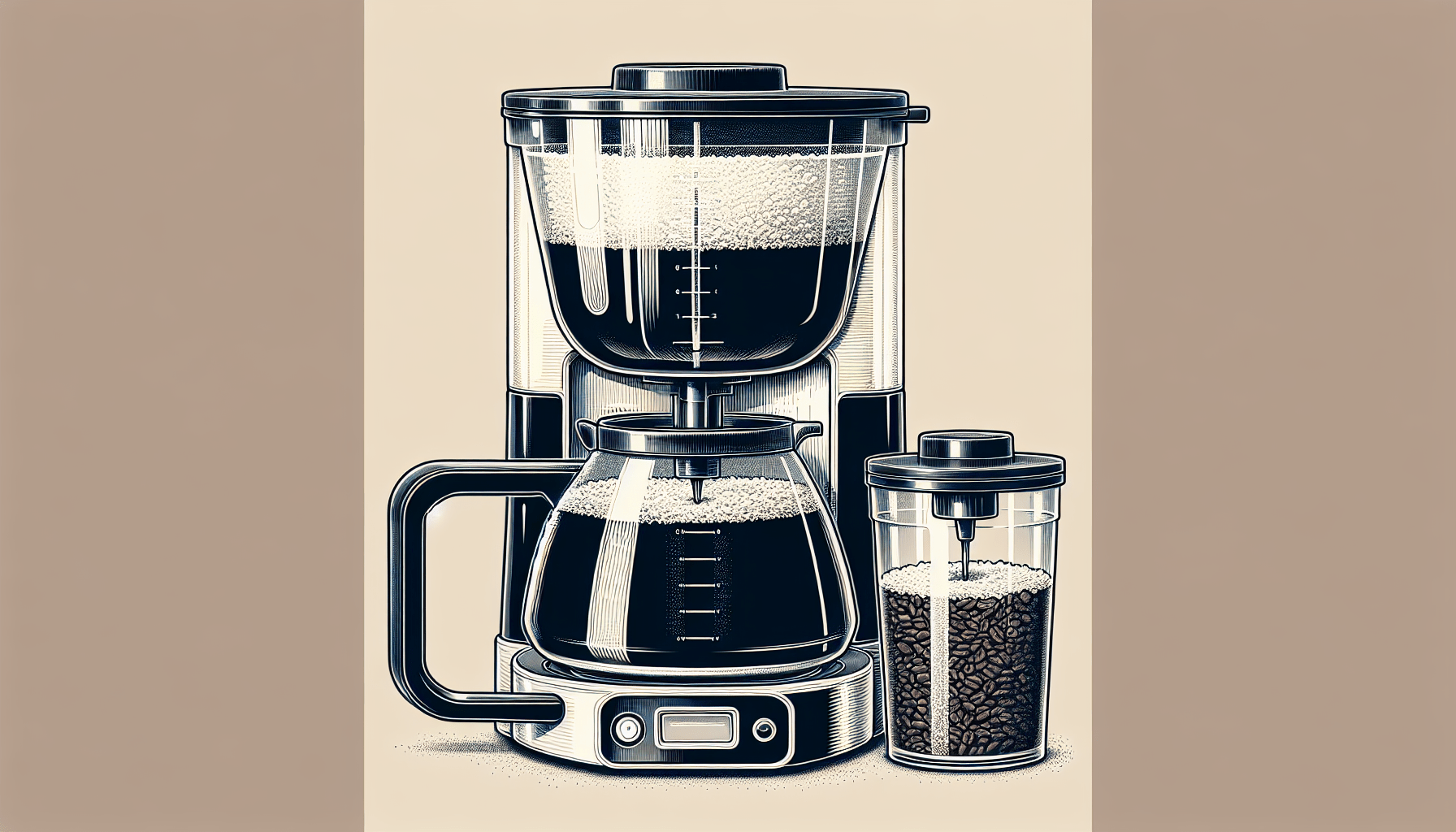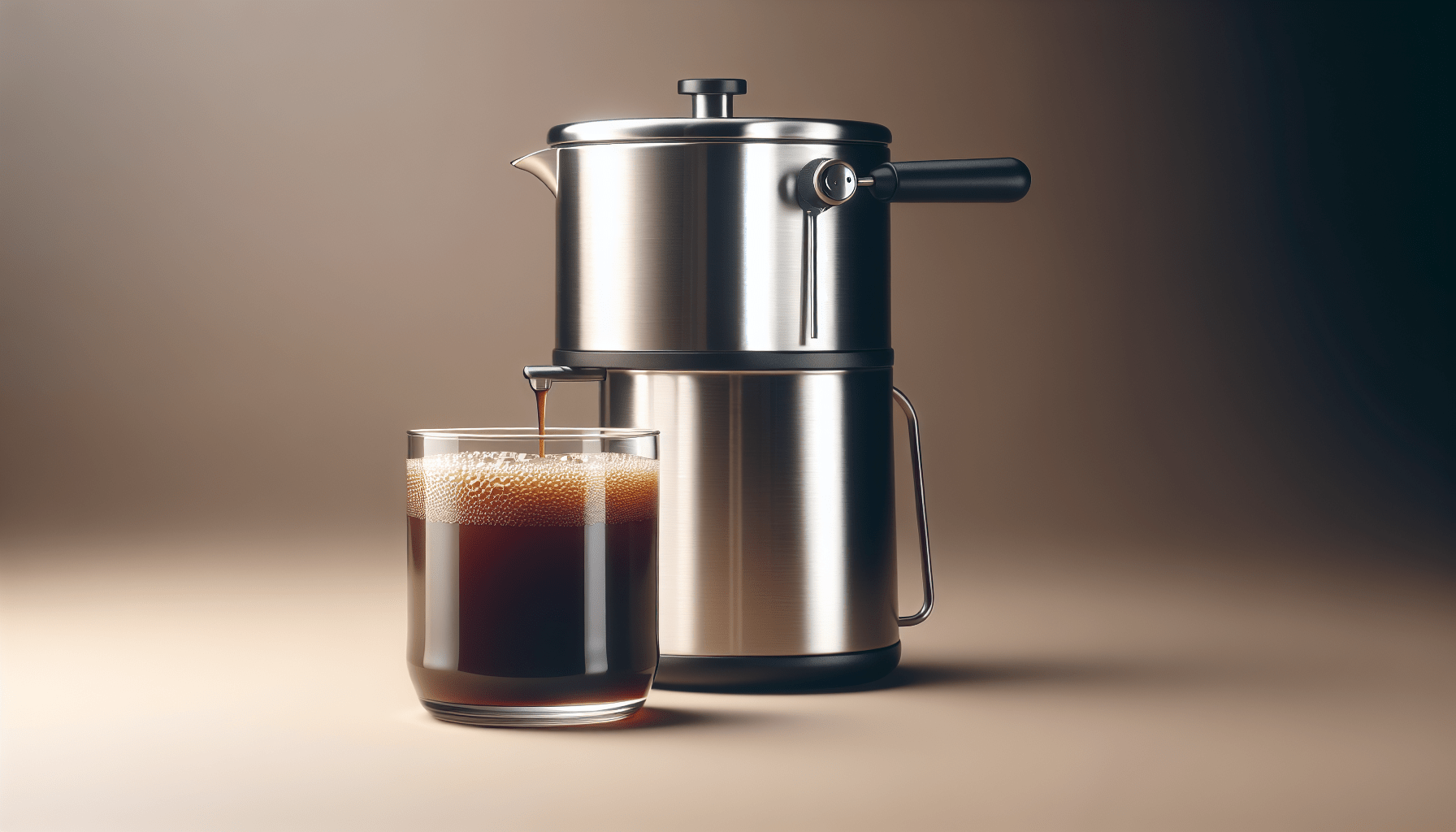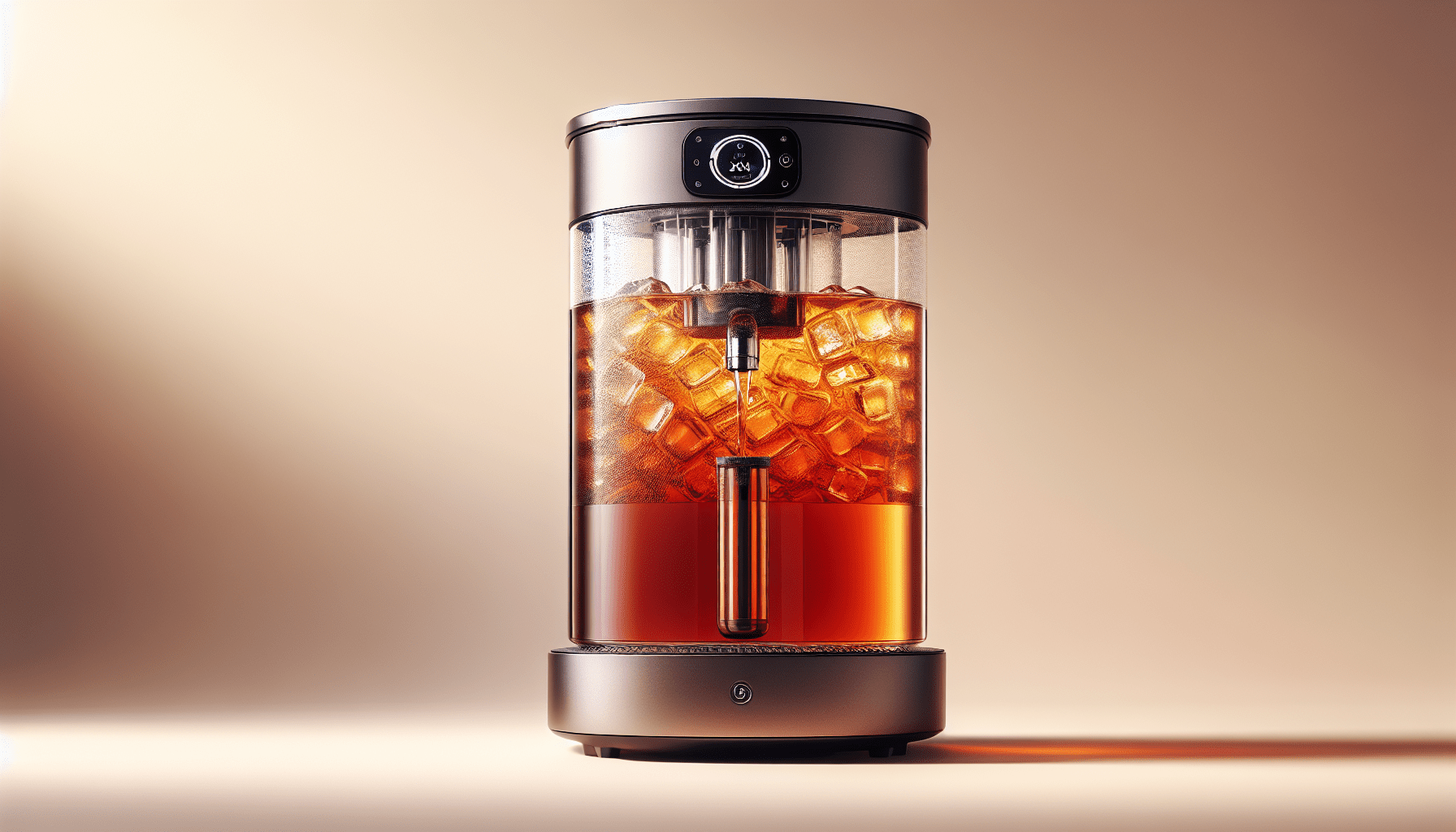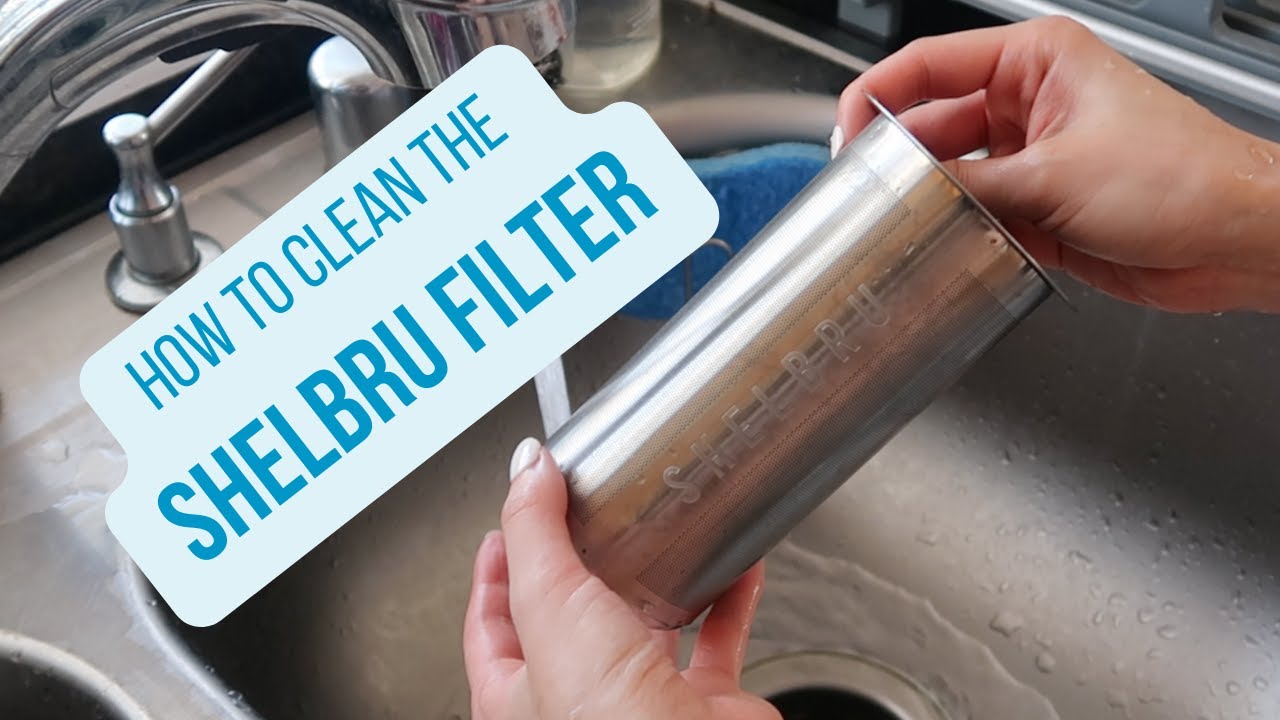Did you ever wonder if your beloved cold brew coffee maker uses electricity? Well, the answer is yes, but don’t fret – it’s not as much as you might think. While traditional coffee makers rely on heating elements and pumps, cold brew makers have a more energy-efficient approach to brewing that saves you money while still delivering that smooth and refreshing cup of joe. Curious to know more? Let’s dive deeper into the world of cold brew and discover how these innovative machines work their magic.
What is Cold Brew?
Definition of Cold Brew
Cold brew is a type of coffee brewing method that involves steeping coffee grounds in cold water for an extended period of time, typically 12-24 hours. This slow extraction process creates a smooth, less acidic and less bitter coffee concentrate that can be diluted with water or milk to create a refreshing and flavorful cold drink.
Difference between Cold Brew and Iced Coffee
While both cold brew and iced coffee are popular choices for cooling down on a hot summer day, they are not the same. The main difference lies in the brewing process. Cold brew is made by steeping coffee grounds in cold water, whereas iced coffee is made by brewing hot coffee and then chilling it with ice. This distinction in brewing methods results in different flavor profiles and strengths. Cold brew is typically smoother and less acidic, while iced coffee retains some of the acidity and flavors from the hot brewing process.
How Do Cold Brew Makers Work?
Basic Mechanism of Cold Brew Makers
Cold brew makers are specifically designed to simplify and enhance the cold brewing process. They typically consist of a container or pitcher with a built-in filter mechanism. The container is filled with water and coffee grounds, and then left to steep for the desired amount of time. The built-in filter ensures that the coffee grounds are separated from the liquid, resulting in a clean and sediment-free cold brew concentrate.
Components of Cold Brew Makers
Cold brew makers usually consist of a few key components. These include a container or pitcher for steeping the coffee, a filter or mesh mechanism to separate the brewed coffee from the grounds, and a lid or cover to prevent unwanted aromas or contaminants from entering the brew. Some cold brew makers also feature additional accessories such as measuring scoops or spigots for easy dispensing.
No Electricity Required
One of the great advantages of cold brew makers is that they do not require electricity to operate. Unlike traditional coffee makers that rely on heat and electricity to brew hot coffee, cold brew makers solely rely on the steeping process. This makes them energy-efficient and environmentally friendly, as you can enjoy a delicious cup of cold brew without adding to your electricity consumption.
Manual Cold Brew Makers
Hand-powered Cold Brew Makers
Manual cold brew makers are a popular choice for those who appreciate a hands-on brewing experience. These devices typically involve a manual mechanism, such as a special lid or plunger, that assists in the brewing and filtration process. By applying pressure or turning the lid, users can control the extraction and filtration of the coffee, resulting in a customized cold brew concentrate.
Principle of Manual Operation
The principle behind manual cold brew makers is simple yet effective. By gently agitating the coffee grounds and cold water, the manual mechanism helps to enhance the extraction process. This agitation allows for a more even extraction of flavor, producing a well-rounded and balanced cold brew. Additionally, the manual operation allows users to have greater control over the brewing process, enabling them to experiment and tailor the cold brew to their personal preferences.
Electric Cold Brew Makers
Electric Cold Brew Makers
For those seeking convenience and automation, electric cold brew makers are an excellent choice. These machines are designed to automate the entire cold brewing process, from steeping to filtration, without the need for manual intervention. Electric cold brew makers provide a hassle-free and consistent brewing experience, perfect for busy individuals or coffee enthusiasts who desire a consistently delicious cold brew.
Electricity Usage in Electric Cold Brew Makers
While electric cold brew makers do require electricity to power their automation features, their energy consumption is typically minimal compared to other kitchen appliances. Most electric cold brew makers are designed to operate on low power modes, ensuring that they do not significantly contribute to your overall energy usage. Additionally, the time-saving benefits and convenience provided by electric cold brew makers often outweigh the minimal electricity usage.
Benefits of Using an Electric Cold Brew Maker
Convenience and Time-saving
One of the primary advantages of using an electric cold brew maker is the convenience it offers. With just a push of a button, you can initiate the brewing process and let the machine do the work for you. This saves you valuable time and effort, allowing you to focus on other tasks while your cold brew is being made. Electric cold brew makers also often have programmable timers, enabling you to have your cold brew ready as soon as you wake up in the morning or come home from work.
Consistent Brewing Process
An electric cold brew maker ensures consistency in every batch of cold brew. The automation features not only simplify the brewing process but also eliminate human error and inconsistency. With precise temperature and steeping controls, electric cold brew makers guarantee that each cup of cold brew has the right balance of flavors and aromas, providing a consistently satisfying and delicious outcome every time.
Automation Features
Electric cold brew makers often come equipped with various automation features that enhance the brewing experience. These can include programmable timers, adjustable steeping times, and auto shut-off functions. Some models even offer temperature control settings, allowing you to customize the brewing conditions to suit your preferences. With these automation features, you can effortlessly create your perfect cup of cold brew with minimal effort and maximum convenience.
Considerations for Choosing a Cold Brew Maker
Preference for Manual or Electric
When choosing a cold brew maker, it is important to consider your personal preferences and brewing style. If you enjoy a hands-on brewing process and the ability to customize your cold brew, a manual cold brew maker may be the best choice for you. On the other hand, if you prioritize convenience and are seeking a consistently delicious cold brew with minimal effort, an electric cold brew maker may be more suitable.
Price Range
Cold brew makers come in a wide range of prices, so it is important to establish a budget before making a purchase. Manual cold brew makers tend to be more affordable, as they do not require any electrical components. Electric cold brew makers, on the other hand, often come with additional features and automation, which can increase the price. Consider your budget and the features that are most important to you when making a decision.
Capacity
Consider how much cold brew you typically consume or plan to make at a time. Cold brew makers come in various sizes, ranging from small individual servings to larger pitchers that can produce several cups of cold brew. If you are the only one drinking cold brew or have limited storage space, a smaller capacity cold brew maker may be sufficient. However, if you frequently entertain guests or enjoy sharing your cold brew with others, a larger capacity option may be more suitable.
Tips for Making Cold Brew at Home
Selecting the Right Coffee Beans
The quality and flavor of your cold brew largely depend on the coffee beans you choose. Opt for beans that are specifically labeled for cold brew or have a coarse grind size. Brazilian, Colombian, or Ethiopian coffee beans are popular choices for cold brew due to their rich flavor profiles. Experiment with different beans and blends to find the taste that suits your preferences best.
Grinding the Beans
For optimal cold brew extraction, it is important to use a coarse grind size. This allows for a slower extraction process and prevents over-extraction, which can result in a bitter and unpleasant taste. Invest in a burr grinder, as it provides a consistent and even grind size, ensuring that all the coffee grounds are evenly exposed to the water during the steeping process.
Water-to-Coffee Ratio
Finding the right water-to-coffee ratio is crucial for achieving the desired strength and flavor in your cold brew. As a general guideline, a ratio of 1:4 (1 part coffee to 4 parts water) is a good starting point. However, feel free to adjust the ratio to your taste preferences. If you prefer a stronger brew, increase the amount of coffee grounds. If you prefer a milder brew, decrease the amount of coffee grounds.
Steeping Time
The steeping time for cold brew can vary depending on your preferences and the type of coffee beans used. However, a good rule of thumb is to steep the coffee grounds for 12-24 hours. Steeping for a shorter period of time may result in a weaker brew, while steeping for a longer period of time may lead to over-extraction and bitterness. However, feel free to experiment with different steeping times to find the strength and flavor profile that you enjoy the most.
Filtering the Brew
Once the steeping time is complete, it is important to filter the cold brew to remove any sediment or coffee grounds. This can be done using the built-in filter mechanism in your cold brew maker or by using a separate fine-mesh sieve or cheesecloth. Filtering helps ensure a clean and smooth cold brew concentrate, ready to be enjoyed on its own or mixed with water or milk.
Alternative Techniques for Making Cold Brew
Immersion Method
The immersion method is the most common technique for making cold brew at home. It involves steeping coffee grounds in cold water for an extended period of time, similar to the basic cold brew method. With this method, the coffee grounds are mixed directly with the water, allowing the flavors to infuse gradually. After steeping, the coffee is filtered to separate the grounds from the liquid, resulting in a smooth and flavorful cold brew concentrate.
Japanese Method
The Japanese method of making cold brew is known for its simplicity and efficiency. It involves using a slow drip system, where water is dripped very slowly onto a bed of coffee grounds. This method requires special equipment, such as a Kyoto or Japanese Tower dripper, and can take several hours to complete. The resulting cold brew is often lighter in body and more delicate in flavor compared to other methods.
Dutch Method
The Dutch method, also known as the Dutch coffee or Cold Drip method, is a unique way of making cold brew that involves the use of a cold drip tower. In this method, ice-cold water is dripped over a bed of coffee grounds at a controlled rate, usually with the help of gravity. The slow dripping process extracts the flavors and aroma from the coffee, resulting in a smooth and complex cold brew concentrate. This method is often favored by coffee enthusiasts for its visually stunning and mesmerizing brewing process.
Toddy Method
The Toddy method is a popular technique for making large batches of cold brew concentrate. With this method, a special device called the Toddy Cold Brew System is used. The coffee grounds are steeped in cold water for up to 24 hours, after which the cold brew is filtered through a felt or nylon filter. The Toddy method produces a highly concentrated cold brew that can be stored in the refrigerator for up to two weeks. To enjoy a cup of cold brew, simply dilute the concentrate with water or milk.
Conclusion
Personal Preferences and Needs
When it comes to choosing a cold brew maker, the most important factor to consider is your personal preferences and needs. Whether you prefer the hands-on approach of a manual cold brew maker or the convenience of an electric one, there are options available to suit every brewing style. Take into account the price range, capacity, and additional features that fit your lifestyle and make your cold brew brewing experience enjoyable.
Exploring Different Cold Brew Making Techniques
While cold brew makers provide a convenient and efficient way to make cold brew at home, it’s also worth exploring alternative techniques for making cold brew. The immersion method, Japanese method, Dutch method, and Toddy method each offer unique brewing experiences and flavor profiles. Trying out different techniques can help you discover new nuances and flavors in your cold brew, expanding your appreciation for this refreshing and satisfying coffee beverage. So go ahead, pick your favorite cold brew maker or try a new brewing method, and enjoy the art of making and savoring a perfect cup of cold brew.




